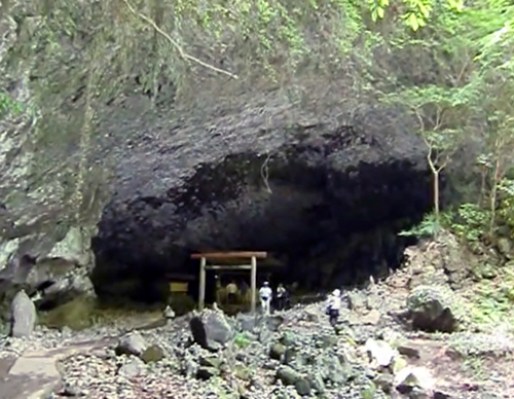By David Yamaguchi The North American Post

The name “Amaterasu” is vaguely familiar to Japanese Americans as that of the sun-goddess daughter of the Shinto gods Izanami and Izanagi, who made Japan according to its origin mythology. Amaterasu is remembered mainly for a time when she chose to withdraw from the world and hide in a cave. Then, the world grew dark, until she was lured out with a mirror.
A few years back, I described how this eclipse tale has been linked to a real 10-minute eclipse over Kyushu on March 24, AD 247 (“Eclipses in Japanese History,” napost.com, Dec. 2016). The event must have been terrifying!
What I didn’t know then is that two real physical caves in the mountains of central Kyushu are associated with the legend. Entering the keywords “Amano Iwato” into Google Maps reveals their location.
One of the caves is closed to the pubic; its entrance is visible from a shrine on the opposing valley wall. A second nearby cave is popular with Japanese visitors (article, “Visit the mythical cave that hid the Sun Goddess in Japanese mythology,” SoraNews24.com, Sept. 2022).
The two interesting caves aren’t on most international visitors’ destinations. Probably this is because large countries such as the US have their own large natural caves (for example, the similarly shaped Mogollon Cave, New Mexico).



